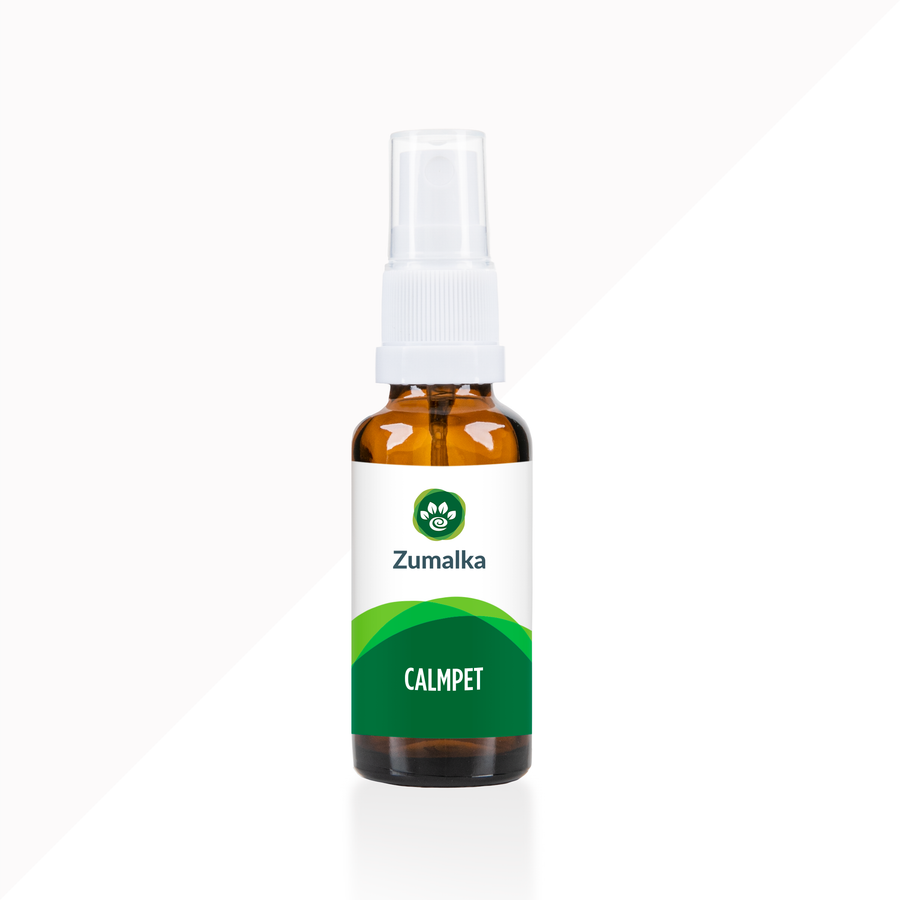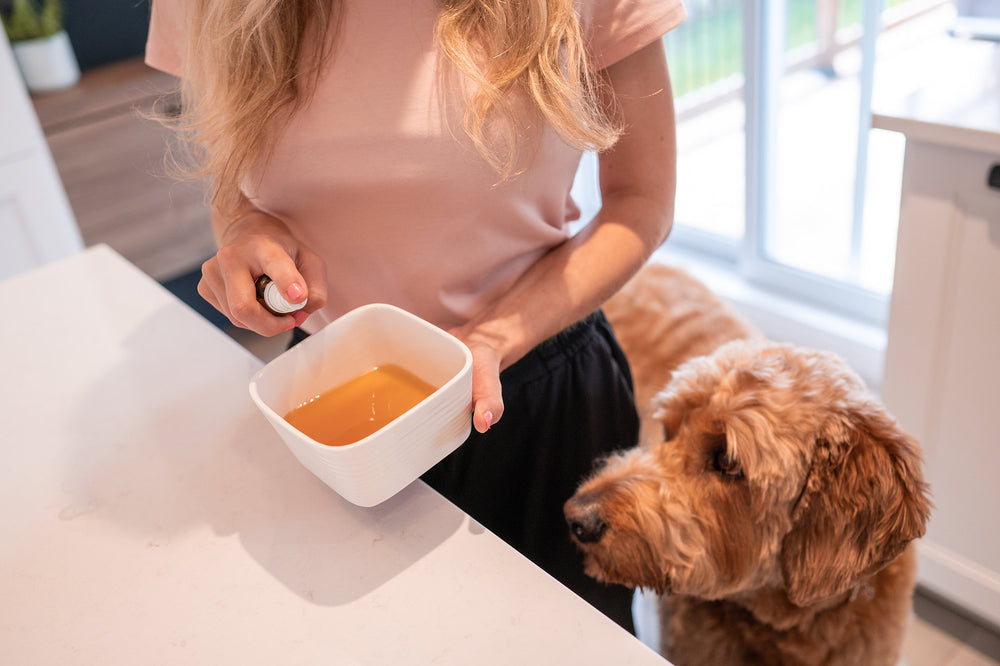9 Simple and Natural Ways to Help a Dog with Anxiety
Knowing how to help a dog with anxiety is crucial when it comes to giving your canine family member the quality of life he truly deserves.
If neglected or left unchecked, not helping your dog cope with anxiety can lead to serious behavioral problems sooner or later.
Many dogs unexpectedly develop destructive behaviors because of not managing anxiety the right way, especially in the case of separation anxiety in dogs.
Unlike what a lot of people mistakenly believe, dog anxiety is a treatable condition.
What makes things even more interesting is the fact that there are simple and natural ways to achieve this—and you don't have to get your hands on "conventional" anti-anxiety medication immediately.
Dogs suffering from separation anxiety and other types of anxiety issues need immediate help
Using our more than a decade of combined experience in holistic medicine, my team and I at Zumalka are going to get you in on simple and practical pointers on how to deal with anxiety (especially treating separation anxiety) without immediately resorting to dog anxiety meds.
Make sure you follow along to find out how to help a dog with anxiety using natural means as well as get the lowdown on the causes and symptoms of this problem.
We’re also revealing our favorite home remedy for dog anxiety as you go along, too.
How about we start things off by finding out what exactly dog anxiety is?
What is Dog Anxiety?

Dog anxiety is the uncontrolled surge of uneasiness, dread, and fear that your canine best friend could experience at a given moment.
Our pet parents should remember that separation anxiety and other types of anxiety affect a dog's mind and should not be disregarded in any way since it can potentially lead to cognitive dysfunction syndrome.
Although going through very few bouts of anxiety is totally normal for your dog, it’s a different story when your pet already experiences excessive levels of anxiety in a repeated and unexpected manner. They may already be prone to inadvertent behavior modification that is negative in nature.
Dogs with separation anxiety and similar problems usually display anxious behaviors.
"Anxious behaviors" or distress behaviors often involve unexpected significant changes in your dog's life like extreme stress, house soiling, excessive barking as well as the possibility of a panic attack.
Not knowing how to help a dog with anxiety can eventually set off behavioral issues like over-the-top barking and territorial behavior, including unprovoked biting and destructive tendencies.
Most dogs often get misunderstood because their pet parents don't have a clue that they are going through anxiety like separation anxiety.
Now we’ve got that out of the bag, let’s discuss the types of dog anxiety…
Types of Dog Anxiety

There are basically (6) types of anxiety in dogs, which are briefly described as follows:
(1) Age-related dog anxiety
Age-related dog anxiety is common among senior dogs whose bodies are already experiencing some significant changes in the production and management of hormones.
This hormonal imbalance usually leads to feelings of confusion and disorientation, which makes older dogs more prone to unexpected fear and unease.
Due to the several changes taking place in their bodies, many dogs in their golden years often experience high levels of stress that can act as a trigger to develop separation anxiety and similar anxiety issues.
(2) Canine anxiety triggered by social factors
Social anxiety is prevalent in dogs who were not nurtured to be comfortable around other dogs and animals as well as other people.
This is common among dogs who are regularly tied on a leash, subjected to unreasonable crate training practices, or kept inside cages for very long periods.
While it may not immediately manifest, a dog's behavior will often become negatively affected in the long run. Dogs suffering from this type of anxiety are usually those in their adult and senior years but can be observed in puppies on rare occasions.
The lack of mental stimulation through the use of puzzle toys as well as games that foster meaningful physical contact are often considered major factors for this problem.
Additionally, not all dogs will like the same puzzle toy so make sure you choose the right one.
(3) Dog separation anxiety
Separation anxiety is typically observed in dogs who somehow got separated from their families or experienced prolonged periods of loneliness. One very common example of separation anxiety is when a dog is suddenly left to the care of another caretaker or household.
The sudden absence of his loved ones can trigger negative feelings and thoughts in your dog's consciousness. If a dog continues to have this negative mindset, he may even have the notion to escape confinement sooner or later.
Being inherently emotional, dogs can feel high levels of agitation and nervousness during these situations.
This is why you need to treat separation anxiety as soon as possible since dogs dealing with this type of anxiety can be prone to recurring bouts of fear, dread, and restlessness when it strikes.
Moreover, separation anxiety may cause early labor in pregnant dogs due to unexpected imbalances in hormonal levels.
Other indicators that a pregnant dog with anxiety may go through preterm delivery also include a sudden drop in body temperature, excessive clinginess, drastic loss of appetite, and vomiting.
Encouraging positive reinforcement and behavior modification through training sessions for a few weeks is one way of treating separation anxiety in dogs.
This usually involves a veterinary behaviorist, a certified applied animal behaviorist or a certified professional dog trainer depending on the situation.
Having a dog sitter if you will be gone for a long time is also a smart move. This is because dogs with separation anxiety often yearn for gestures of affection and attention.
It is crucial to take note that you may have to experiment with different approaches when treating separation anxiety. Dogs with separation anxiety will often have different backgrounds, triggers, and preferences.
(4) Anxiety set off by environmental change or factors
This type of canine anxiety is triggered by loud noises, unfamiliar smells, strange sights, and other factors that can make a dog feel uneasy or afraid. It is closely associated with separation anxiety in dogs as well.
Regardless if your pet is completely house-trained, he will just become more and more affected if you don't introduce steps to reduce anxiety. Common examples of these factors include shouting, blaring car horns, sirens and fireworks.
Some dogs get very stressed when they hear the sound of thunder. Long periods of boredom dogs go through when transferring to a new place can also be a factor.
For this type of anxiety, a lot of pet parents often immediately choose drug therapy or anti-anxiety medications rather than going for more natural strategies like increasing opportunities for mental stimulation with family members.
Bringing your pooch to dog parks or "enrolling" him in a doggy daycare can be helpful in these circumstances. Hiring a dog walker can also help.
(5) Illness-related anxiety
When your canine best friend is ill, his body is prone to sudden hormonal fluctuations that make his senses more acute. He will be more reactive to sounds, changes in temperature, and taste, among others, which can lead to a feeling of panic or dread.
Common illnesses linked to this type of anxiety include urinary tract infections, oral and dental health issues as well and nasal wellness problems.
However, compared to other types of dog anxiety, this one usually goes away when your dog recovers from sickness.
But please take note that if there is an unexpected absence of pet parents or family members during this time, this might turn into separation anxiety.
(6) Anxiety triggered by a traumatic experience
This type of anxiety is often set off by a traumatic event or memory involving a specific place, person, or animal where a dog could have suffered an injury, experienced pain, or some other distressing incident.
A dog learns to be extremely aggressive when he's had a lot of traumatic experiences.
Traumatic anxiety is very common among rescue dogs who have had abusive owners or were neglected and mistreated for a long time. The help of a veterinary behaviorist or a certified professional dog trainer may be required.
Now that we’ve finished walking through the causes of dog anxiety, let’s discuss the symptoms that you need to look out for…
Dog Anxiety Symptoms

The following are the most common indicators that your pooch is anxious:
-
Sudden restlessness
-
Loss of appetite
-
Excessive panting and drooling
-
Sudden changes in mood
-
Presence of unexpected behavior problems
-
Lack of playfulness
-
Excessive chewing
-
Displays a "dog distracted" attitude
-
Unreasonable aggression towards humans and other animals
-
Excessive vocalization
-
Sudden change in defecating and urinating routines even when house-trained
-
Destructive behavior (especially in severe separation anxiety)
Next up on our checklist are the ways to help a dog with anxiety…
How to Calm an Anxious Dog

If you’re noticing that your canine companion is exhibiting symptoms of dog anxiety, don't just reach for anti-anxiety medication just yet! Here are some simple and practical strategies you can go for to help him fix this issue:
#1. Establish a “safe space.”
Providing immediate calm and comfort should be your main priority whenever your dog is feeling anxious. This is why you need to have a “safe space” where your canine best friend can have the opportunity to calm down and relieve his separation anxiety.
Any room can be a safe space so long as it is quiet, well-lit, and free from any unnecessary noise or activity. Although it doesn’t have to be isolated, the place should be calm and free from any possible stressors.
Make sure your dog also has access to ample food and water while he is in this safe space.
Dogs with separation anxiety will also need to be constantly assured that you're with them either with a gentle pat on the head or a loving hug.
Always be clear on your dog's limits to where his safe space begins and ends. One straightforward way to do this is by marking these with a baby gate or some other visual cue.
#2. Maintain regular meal times.
Did you know that one of the major triggers of canine anxiety is hunger? This is because the hormones that are released in your canine companion’s body to signal hunger are the same as the ones that are discharged when he is feeling anxious.
And your dog will likely misinterpret his hunger for anxiety.
Making sure that you maintain regular meal times helps prevent this from happening. Additionally, cutting back on sugary treats also helps keep dog anxiety at bay. This is because too much sugar can cause sudden mood swings in dogs and can make it tricky for them to remain calm.
#3. Have a regular exercise routine.
Having vigorous exercise in your pet checklist can help your canine pal deal with dog anxiety. Besides encouraging the release of feel-good hormones and neurotransmitters like dopamine in your dog’s body, a dynamic workout also helps improve his brain’s ability to manage stress.
Examples of the exercise regimens you can go for include long walks, playing fetch, and hide and seek.
In case your canine bestie is having a hard time getting active, you can also play games that stimulate his mental sharpness like puzzles, and use toys that emit gentle sounds and vibrations.
#4. Give your dog plenty of cuddles and massages.
Did you know that regularly giving your dog cuddles and massages activates his brain to produce feel-good hormones called oxytocin? Apart from helping relieve stress, oxytocin also lowers feelings of fear and anxiety.
The next time your canine loved one is experiencing anxiety, give him a gentle massage on the forehead, ears, and chin since these are the areas that usually tense up the most. This is really common among dogs going through separation anxiety.
As a bonus, frequent cuddles and massages not just help your dog remain calm, but also deepen the bond between you and your beloved pet.
#5. Reassure him with encouraging words and gentle music.
Aural cues like words and music can be used to help calm an anxious pooch, particularly those experiencing separation anxiety. What’s interesting is that they have the same effect on your canine companion as cuddles and massages.
Instead of scolding your dog straight away when he is exhibiting anxiety-related behavioral responses like excessive chewing and unnecessary barking, soothe him with encouraging words and gentle music. Simply telling your dog you love him in a calm and reassuring voice will already help a great deal.
In case you’re having a tricky time choosing which tunes to go for to help your anxious dog relax, a lullaby will do the trick.
#6. Know the triggers to keep clear of.
You must become familiar with the triggers that set off your dog’s anxiety so you can make the necessary changes in your routine.
Examples of these include the places you visit, the activities you do, the sounds that you regularly hear, as well as the people and animals you mingle with.
Making it a point to take note of these triggers can help a lot in managing and easing your canine family member’s anxious feelings. It can also help in keeping full-blown dog anxiety episodes from taking place by keeping him calm.
#7. Introduce gradual socialization.
If your dog experiences anxiety when he is around other people or animals, one strategy you can go for is introducing gradual socialization. One method you can go for is to frequently take him on short walks in an environment he is familiar with— like your neighborhood.
However, the catch is that you slowly increase the length of each walk every time. Besides providing your dog with regular exercise, this also allows him to indirectly “meet” new faces, smells, sounds, and sights.
Doing this repeatedly helps boost your canine family member’s confidence and he won’t be as prone to dog anxiety in the long run.
#8. Transform stressors and triggers into positive things.
While this may sound odd at first, you can turn your dog’s stressors into positive things by applying a strategy called “counter-conditioning.”
This involves lessening your canine family member’s tendency to become anxious whenever a stressor is present by giving him a treat.
For example, if your dog becomes anxious when the vacuum cleaner is turned on, simply give him a loving hug and then reward him with a treat for being brave.
Apart from giving him the notion that he has nothing to worry about, he will also think of the experience as a positive one.
#9. A home remedy you should take into consideration,
Our CALMPET product is an all-natural and high-quality option that is designed to support your canine family member when he is suffering from canine anxiety.
This product is designed to help maintain the balance of the nervous system and improve the social behavior of your pet.
Moreover, the different natural homeopathic ingredients work in synergy to promote an overall sense of serene well-being.
To use the CALMPET product to support your dog during anxiety, such as separation anxiety, you simply have to give him one (1) spray either in water or directly in the mouth until the symptoms have already disappeared.
Next, let’s discuss some frequently asked questions about anxiety in canines…
FAQs you should keep in mind

The following are some of the most frequently asked questions when it comes to properly supporting anxious dogs:
What is stressed dog body language?
Stressed body language is a physiological cue that a dog will exhibit whenever he is feeling extremely stressed or anxious.
Common examples of these include tucking his tail between his legs, unnecessary barking and growling, excessive licking and panting, as well as aimless pacing.
A dog exhibiting stressed body language is highly likely to demonstrate symptoms of anxiety sooner or later if the stressors affecting him are neglected or left unchecked.
Can anxiety cause my dog to pee in the house?
The short answer is yes.
Sudden changes in the defecation and urination routine of your canine family members are some of the most common indicators of dog anxiety. Moreover, this behavior can be seen even among housebroken or trained dogs who are suffering from this condition.
Can food trigger your dog's anxiety?
While dog food, per se, does not cause dog anxiety, loading up on too much protein and carbohydrates may increase the likelihood of spikes and crashes in sugar levels in a dog’s body.
When sugar levels are not kept in check, they tend to cause feelings of anxiety and stress.
This is why keeping a close eye on your canine family member’s diet is crucial when it comes to helping him calm down. Having reliable dog anxiety support like ANXIETY is also recommended since this issue can occur the least you expect it.
So that pretty much wraps up our walkthrough on how to help a dog with anxiety and I hope you’ve learned a lot from this article. And always remember that we are naturally with you and your pet, every step of the way!






Leave a comment